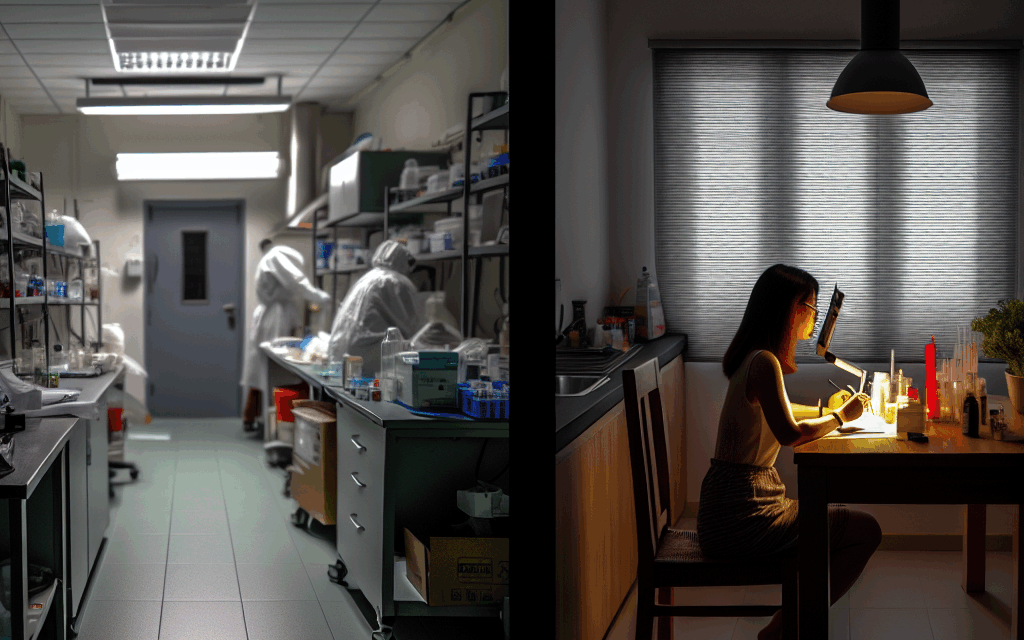Summary
The expansion of at-home testing is reshaping the landscape of clinical diagnostics, affecting clinical lab volumes and the role of lab professionals. As direct-to-consumer testing grows, lab technicians play a critical role in ensuring test accuracy and quality while navigating evolving technologies, regulatory changes, and consumer expectations.
Key Takeaways
- The rise of at-home testing could reduce clinical lab testing volumes but increases the demand for quality oversight.
- Lab professionals are pivotal in verifying at-home test accuracy and results interpretation.
- New technologies are driving the at-home testing market, requiring adaptation from traditional labs.
- Regulatory frameworks must evolve to ensure consumer safety and test reliability.
In recent years, the proliferation of at-home diagnostic tests, from COVID-19 kits to genetic and hormone assessments, has surged. This trend poses significant implications for clinical lab professionals. While at-home testing offers convenience for consumers, it poses challenges related to test accuracy, data interpretation, and quality assurance—areas where lab technicians prove indispensable.
The Direct Impact on Laboratory Volumes and Quality Assurance
The rise of at-home testing could potentially lead to a decrease in the volume of samples processed by clinical laboratories. While some argue this shift may threaten traditional lab services, it simultaneously opens the door for lab professionals to reassert their importance through quality assurance and data validity.
Accuracy oversight becomes paramount when considering at-home testing’s allure, largely stemming from convenience and rapid results. Lab professionals are uniquely positioned to shape this landscape by providing behind-the-scenes expertise. Ensuring that at-home tests meet stringent quality standards is critical, requiring rigorous validation processes. As gatekeepers of quality, lab technicians must assess these tests, verifying their sensitivity and specificity before they reach consumers.
For labs that successfully navigate these challenges, opportunities exist in partnerships with at-home testing companies to offer follow-up confirmatory testing and expert result interpretation. This partnership could also enhance the credibility of at-home tests while solidifying the essential role labs play in accurate diagnostics.
Regulatory Challenges and Technological Advancements
As the at-home diagnostics market expands, regulatory frameworks must evolve to keep pace with innovations. Regulatory bodies like the US Food and Drug Administration and Clinical Laboratory Improvement Amendments are tasked with ensuring the safety and effectiveness of these products, providing a backdrop for lab professionals to operate within. Staying abreast of regulatory changes is pivotal for labs to maintain compliance and guide manufacturers in meeting necessary standards.
Advances in technology further drive the at-home testing market. Innovations in microfluidics, biosensors, and connectivity are making these tests more accurate and reliable. As these technologies develop, lab professionals must harness their expertise to make sense of the increased data volume generated by consumer tests. The role of lab technicians extends beyond interpreting results; they must also manage the integration of these new technologies into existing systems, ensuring that data remains secure and reliable.
This integration can also offer professional growth opportunities for lab technicians, who may need training in new analytical techniques and data management skills. As consumer demand continues to grow, lab professionals’ ability to adapt and respond to technological shifts will be crucial for maintaining the standards of clinical diagnostics.
In conclusion, the rise of at-home testing presents both challenges and opportunities for clinical laboratory technicians. While testing volumes may shift, the demand for expertise in test validation, quality assurance, and data interpretation remains strong. By staying informed and adaptable, lab professionals can continue to assure the public’s trust in diagnostic testing, safeguarding the future of clinical diagnostics in an ever-evolving technological landscape.




